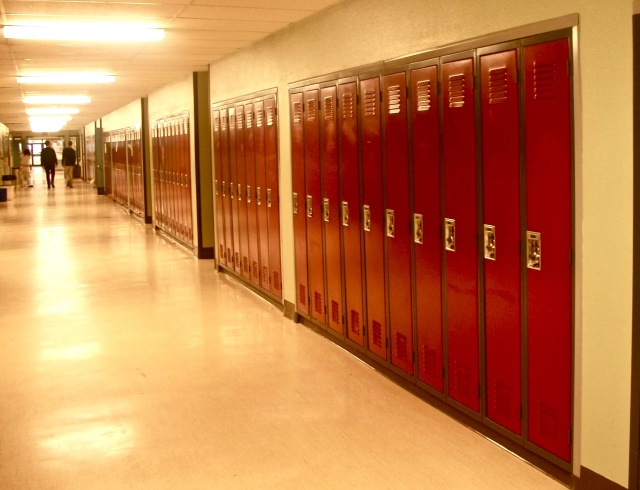
Conservative school reformer Mike Petrilli has criticized the U.S. Office of Civil Rights (OCR) and its recent agreement to settle a complaint against the Oklahoma City Public School District for racially disparate suspension rates.
Petrilli cites the OCR’s finding that, “African American students are 62 percent more likely to be given in-school suspensions in Oklahoma City than are white students.” He adds that African Americans in Oklahoma City are three times likelier to be poor than whites. Petrilli concludes:
Oklahoma City will suspend fewer students, possibly putting student learning and safety at risk, because nobody was willing to challenge the federal government’s questionable assumptions. Oklahoma politicians were up in arms over the feds’ heavy-handedness on the Common Core; why are they so willing to be pushed around on student discipline?
Petrilli is half right in criticizing the OKCPS suspensions and the OCR, but he seems unaware of how complex these issues are. Below is just one example of how I learned how complicated the process of creating safe and orderly schools is.
NCLB undermines code of conduct
When John Marshall H.S. was given relatively more power to enforce its code of conduct, we improved more than any secondary school in the district. Our principals had always been skillful and compassionate when counseling students and advocating for them with teachers, so when school administrators were allowed to enforce our code of conduct in a fairly credible manner, our student performance rivaled the best OKCPS neighborhood school: Northwest Classen. Teachers still wanted more backing, but we all pulled together and we — adults and students — were energized by the vastly improved learning culture that resulted.
Then, a high-profile murder involving alumni increased violence in the school as well as the intertwined problem of truancy. At the same time, in order to meet No Child Left Behind accountability metrics, the central office ramped up pressure to reduce the suspension and absenteeism rates.
By the Thanksgiving holiday of 2003, NCLB had undermined the collaboration that had energized the school’s improvement.
The case of ‘Dante’
When principals or teachers listened to students, it was hard to see discipline issues as hard-and-fast or simply deserving of consistent consequences. Once, as a gang fight was about to explode, I heard a student we can call “Dante,” a powerful wrestler at the time, pull his “homeboys” together for a last-minute pep talk. Before going into battle, they held hands in a circle. Dante said, “I love each one of you,” and joined the brawl.
After watching this scene, my students asked why I didn’t intervene, saying that I was always among the first to jump into those recurring conflicts. “I don’t know,” I replied, “I just don’t know. I just don’t … .” As if the disappointed looks on my students’ face were not enough, I became doubly doused with guilt when I learned why the administration did nothing to restore order: Three of our four principals were out of the building.
I understood the second chances that principals gave to Dante (who later straightened out his life). Creating a respectful culture required a commitment to a credible disciplinary system and to helping individuals who were inappropriately acting out their pain.
IEPs create lost-cause scenario
After two and a-half decades of working within the system, I still can’t say how and why efforts to create safe and orderly schools are repeatedly scuttled, but I know that the Consortium for Chicago School research is correct about this: Disciplinary issues are intertwined with attendance challenges.
In our school, the vast majority of disorder was instigated by students who came to school irregularly, cut classes and fell far behind. Our “hall walkers” included most of the 6 percent of our student population that was not on individual education plans (IEPs) but that was eligible for long-term suspension of 10 days or more. We could continually round them up, assign them to detention and to after-school “credit recovery,” but, at some point, the school had to either assess the promised consequences or lose credibility. When we gave into pressure from the central office and used credit-recovery seat time as a fig leaf for “passing kids on,” all of our hard-earned school-improvement efforts were flushed down the toilet.
The dilemma faced with the 4 percent of our chronically disruptive students who were on IEPs was even more vexing. The spirit and letter of special-education law made complete sense: It would be wrong to punish students for behaviors prompted by their disability. If all schools served similar percentages of special-education students, especially those with conduct disorders or seriously emotional disturbances (SEDs), the steps required for assessing discipline with IEP students would have been reasonable. But 25 percent of our students were on IEPs, with most including SEDs, mental illness and/or a history of surviving trauma.
Helping out one such afternoon, I asked whether the school would be allowed to enforce the rules on non-IEP students. The reply was, “I don’t know. I just don’t know.”
The turning point occurred when our school’s administrators lost confidence after they were unable to address a felony by a student on an IEP. Administrators were stymied by a case where the student ran her car over a classmate, backed up over him, and ran over him again. The battle with the central office over that especially complicated case apparently convinced the school administrators that their campaign for the power to enforce the school’s rules was a lost cause.
Not our fault
Drinking coffee with a couple of assistant principals at the end of the year, we had regained our senses of humor. We discussed the ways of recognizing students as being on special-education IEPs without checking whether they had one on file. When teachers and administrators saw the same hall walkers causing trouble every day, we assumed that they were on IEPs, because otherwise someone would have drawn a line. This circular line of reasoning turned out to be remarkably accurate.
Our discussion shifted to Dante, the wrestler/gang leader, and an assistant principal agreed that he had assumed Dante was on an IEP. The other said he now thought that Dante was not a special-education student, and we could have done something about him. Slapping his knee, the AP laughed and exclaimed, “I think we missed that one!”
I laughed as hard as anyone. After all, we had the best overall staff of teachers and principals that I ever worked with. It was not our fault that the school spun out of control.





















